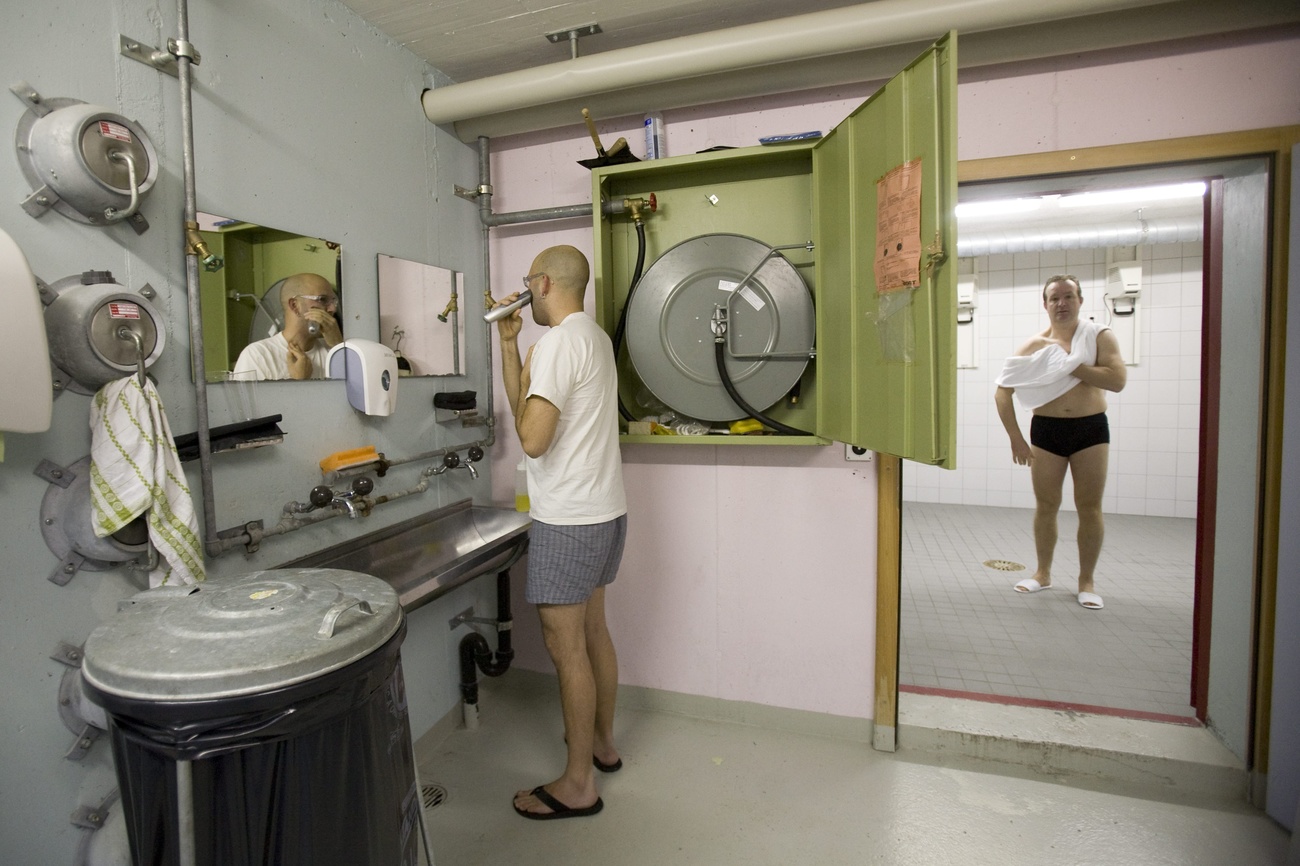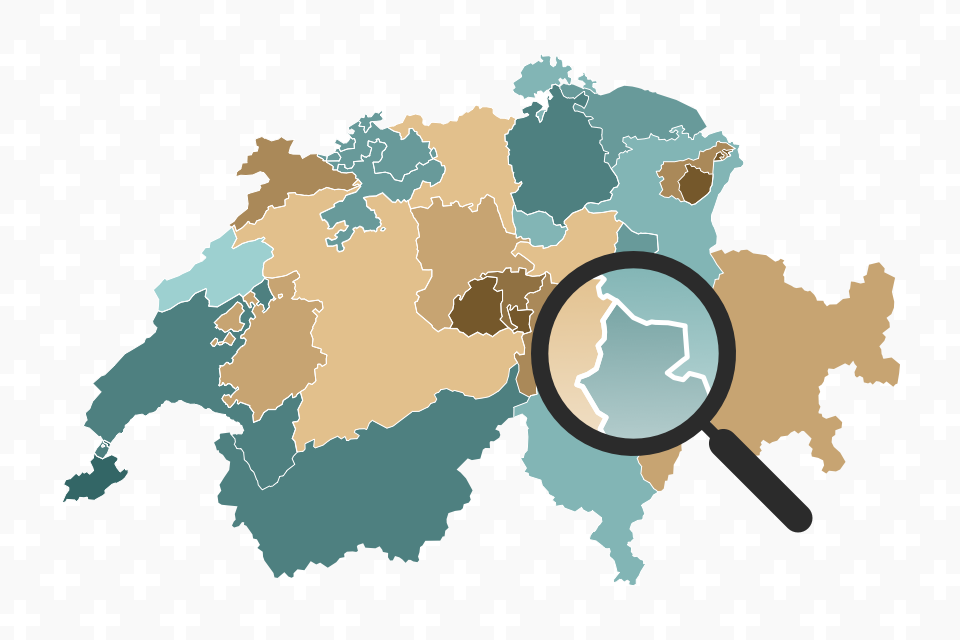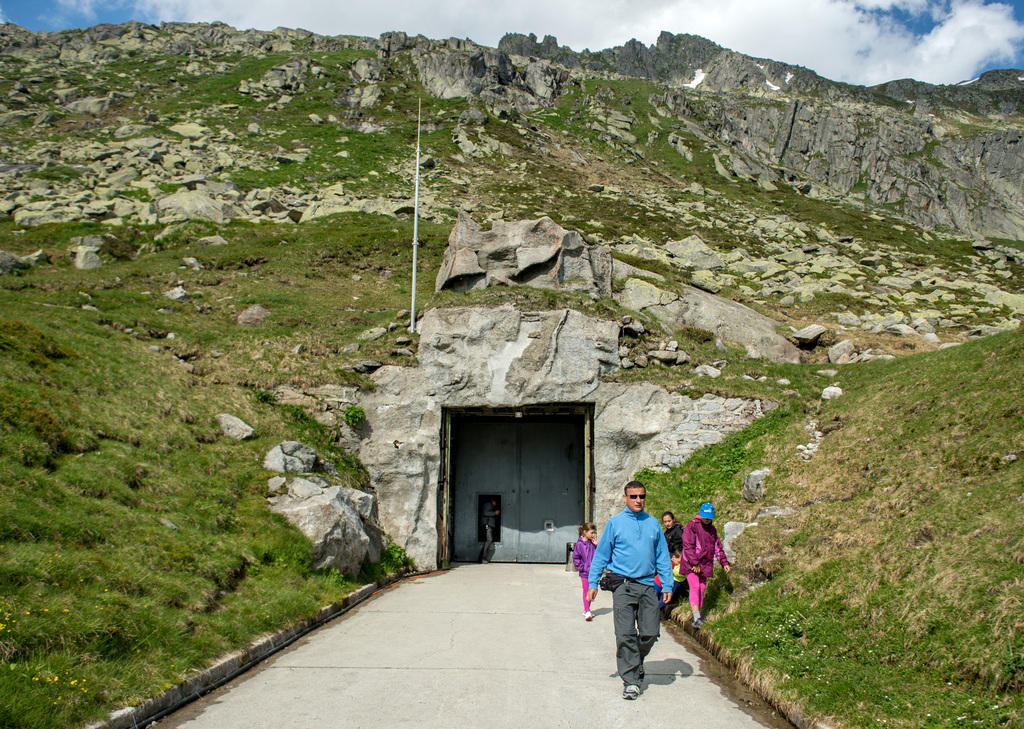Why the Swiss army is reviving its old bunker mentality

The Swiss military bunker network, which was originally dug deep into the Alps to fend off foreign invasion, is no longer up for sale.
In 2010, the remaining bunkers in military hands were declared unfit for purpose and were being sold off to create data centres, artistic projects, hotels and bitcoin storage facilities. But army head, Thomas Süssli, has now told the Tages Anzeiger newspaper that bunkers will play a key role in the defence of the realm in the face of renewed Russian military aggression and other geopolitical threats.
Why the change of heart about military bunkers?
In his newspaper interview on Monday, Thomas Süssli has revived the army’s appetite for operating an underground bunker system. “We have stopped selling bunkers,” he said. “We are currently going through the inventory of command and combat systems again.”
This statement contradicts the opinion of former Swiss Defence Minister Ueli Maurer dating back 13 years. In 2010, Maurer had this to say about bunkers:
“The nature of military threats has changed. The bunkers are poorly placed and the weapons they contain will only last for another ten or twenty years. It’s not worth maintaining something that you’re not going to use in the future.”
Maintaining caches of ammunition in underground bunkers also affects civilians. One example is the village of Mitholz in the Bernese Alps that suffered from the catastrophic explosion of a munitions dump in 1947 and has more recently been evacuated to deal with the remaining explosives.
But the nature of military threats has shifted once again with Russia’s annexation of Crimea in 2014 and subsequent invasion of Ukraine last year.
“Threat is the product of military potential and the intention to use it. We focus on potential. Intentions can change quickly,” said Süssli.
Parliament promised extra money to the army last year, to increase its budget to 1% of GDP (around CHF7 billion or $7.3 billion) by 2030, although this was later thinned down by the government.
In addition to extra financial firepower, Süssli is determined to squeeze every drop out of the army’s existing infrastructure, including 100 bunkers in Switzerland equipped in 2003 with mortars. Others could be used to store ammunition or other equipment.
+ Switzerland’s gold standard for designing bunkers
For example, one bunker currently contains 96 mothballed Leopard tanks that are being held in storage awaiting a re-fit.
How big is the Swiss military bunker network?
The exact extent of the bunker system is a closely guarded secret, as is the location of many bunkers. But there are an estimated 8,000 bunkersExternal link dotted around Switzerland.
The first major defensive bunker was built in Switzerland in 1886, not long after the opening of the Gotthard railway in southern Switzerland.
In 1937 the growing threat of war in Europe saw General Henri Guisan commissioned to construct extensive fortifications in the Swiss Alps, the so-called Swiss National Redoubt, designed to defend alpine passes from invasion.
These bunkers were maintained throughout the Cold War to provide cover against missile attacks that could launch from the USSR.
In addition, civilian buildings were fitted out with around 370,000 reinforced basements to act as shelters in the event of a nuclear war.
But the end of the Cold war and military budget cuts from the mid-1990s led the army to steadily sell bunkers to private buyers.
What uses did civilian buyers have for military bunkers?
Anything from cheese cellars, museums, hotel accommodation, data centres, art exhibitions and a handy place for cryptocurrency fans to store their bitcoin.
The ‘Swiss Fort Knox’, located in canton Bern, takes advantage of the former military bunker’s natural security features to safeguard valuable data.
A handful of old bunkers in secret locations have been converted to store cryptocurrencies deep in the Alps.
Some cantons haven obliged to convert nuclear shelters into emergency accommodation to temporarily house a growing number of refugees.
Mothballed bunkers have also been turned into an underground retreat, complete with conferencing facilities, or alternatively, no-frills hotels.

In compliance with the JTI standards
More: SWI swissinfo.ch certified by the Journalism Trust Initiative










You can find an overview of ongoing debates with our journalists here . Please join us!
If you want to start a conversation about a topic raised in this article or want to report factual errors, email us at english@swissinfo.ch.